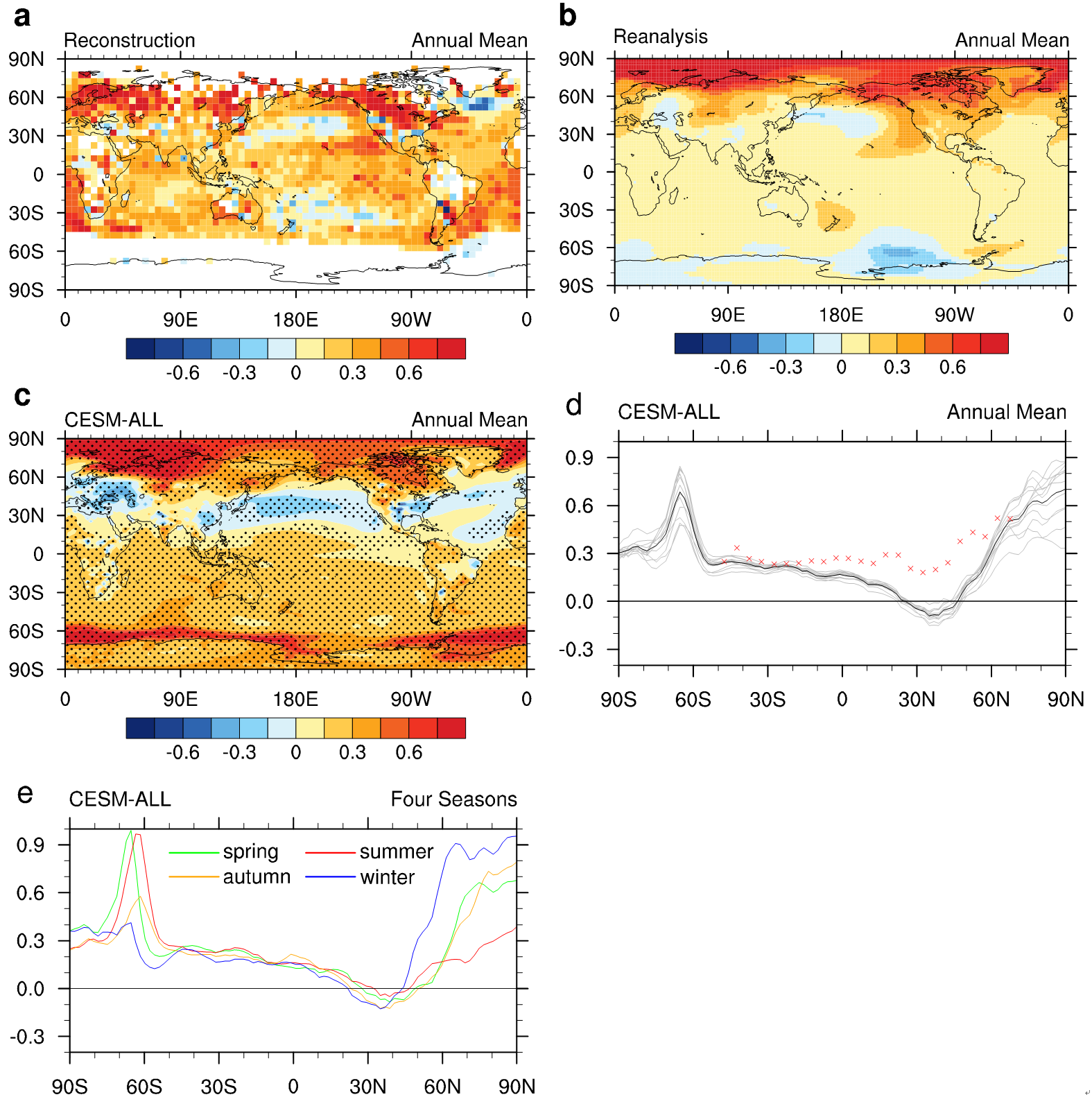您当前的位置:首页 > 科研进展
[发布日期: 2022-09-27 浏览量 3523]
近年来,全球变暖已成为全世界广泛关注的问题。观测证据显示,全球平均地表温度在20世纪(1900-2000)呈现显著的升高趋势。从更长时间尺度来看,20世纪可能是过去千年最暖的百年,该时期全球或半球平均地表温度高于其他世纪,尤其高于小冰期(1450-1850)。然而我们基于重建记录分析发现,北半球中纬度部分区域20世纪地表温度低于小冰期,这与之前全球变暖相关的观念存在矛盾性。同时,过去千年数值模拟试验结果中也存在类似的现象,并且各个季节都有。进一步分析指出,臭氧/气溶胶强迫和土地利用强迫对中纬度冷异常起主导作用,其抵消了温室气体强迫和太阳强迫引起的增暖。机制上,臭氧/气溶胶强迫通过气溶胶-辐射相互作用和大气-云反馈导致地表净短波辐射减少,土地利用强迫则通过改变地表反照率减少地表净短波辐射,进而引起温度降低。其中,臭氧/气溶胶强迫的贡献大于土地利用强迫。本研究强调了臭氧/气溶胶强迫和土地利用强迫在世纪尺度上对区域气候不可忽视的作用。

Figure Difference in annual mean SAT (units: °C) between the 20th century and the LIA in the (a) reconstruction, (b) the Last Millennium Reanalysis version 2.0 and (c) CESM all-forcing ensemble means. (d) Difference in zonally averaged annual mean SAT between the 20th century and the LIA in the reconstruction (star marker) and CESM all-forcing ensemble runs (grey line) and ensemble mean (black line). (e) Difference in zonally averaged SAT between the 20th century and the LIA for spring (green), summer (red), autumn (yellow) and winter (blue) in the CESM all-forcing ensemble means. Dots in (c) indicate where the difference is statistically significant at the 95% confidence level based on the Student's t test.